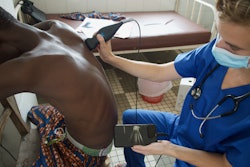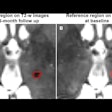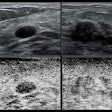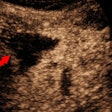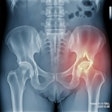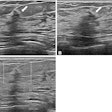Point-of-care ultrasound (POCUS) provides a reliable assessment of venous excess ultrasound (VExUS), comparable to conventional systems, suggest findings published August 20 in the Journal of Critical Care.
A team led by Hui Wang, MD, from China-Japan Friendship Hospital in Beijing found that both POCUS and conventional ultrasound showed strong agreement for most VExUS parameters in critically ill patients with pathologic venous congestion.
“Handheld VExUS achieves reliable core parameter assessment with 37.5% faster scanning,” Wang and colleagues wrote.
Pathologic venous congestion is a significant cause of harm. And while central venous pressure measured during right heart catheterization is used to assess congestion, the researchers pointed out its limited availability and invasiveness.
The VExUS score offers promise as a noninvasive exam, but it is operator-dependent and requires specialized training. Wang and colleagues developed a short-term VExUS course using POCUS devices for residents. This included didactic learning, simulator training, and mentored practice.
The team evaluated POCUS’ diagnostic accuracy when used by resident physicians for assessing venous congestion and compared the results to those of conventional ultrasound. For the study, two blinded residents who went through VExUS training independently performed sequential scans on 80 critically ill patients. They used both POCUS and conventional ultrasound.
From there, two intensive care unit (ICU) mentors interpreted the images to establish gold-standard VExUS scores and assess image quality.
Both ultrasound methods showed strong agreement for most VExUS parameters. The inferior vena cava diameter showed minimal bias (0.037 cm; rho = 0.92, ICC = 0.98), and hepatic velocities showed insignificant differences (intraclass correlation coefficient [ICC] > 0.96).
Both methods achieved high interrater VExUS grading reliability scores. However, POCUS showed reduced renal vein concordance compared to conventional ultrasound.
Comparison between conventional ultrasound, POCUS | ||
Measure | Conventional ultrasound | POCUS |
Interrater reliability | 0.851 | 0.879 |
ICC | 0.865 | 0.912 |
Renal vein concordance | 0.653 | 0.55 |
Image acquisition succeeded in 91% of total cases, including 100% of hepatic and inferior vena cava cases. Finally, POCUS decreased procedural time from eight minutes to five minutes (p < 0.0001) and showed comparable grading accuracy to conventional ultrasound (p = 0.747).
The study authors suggested that implementing POCUS in a typical 20-bed ICU could yield annualized time savings exceeding 200 hours and inspire a shift toward proactive congestion monitoring.
The full study can be found here.






